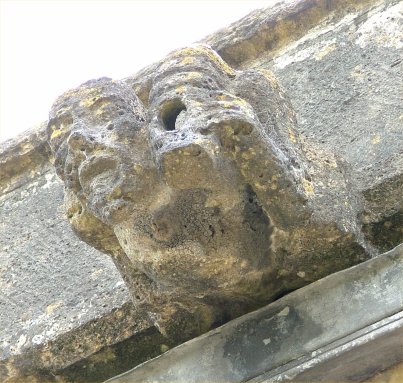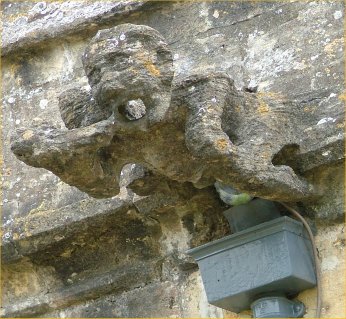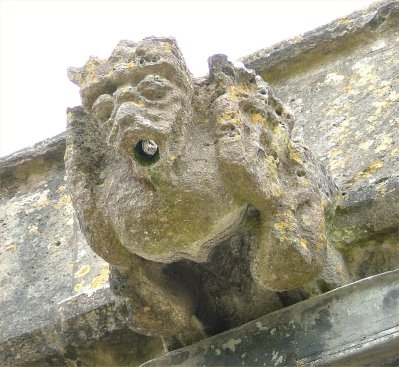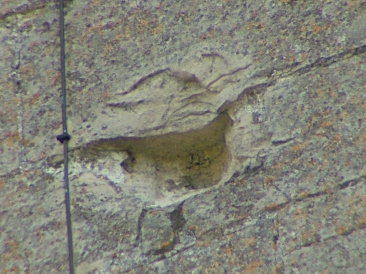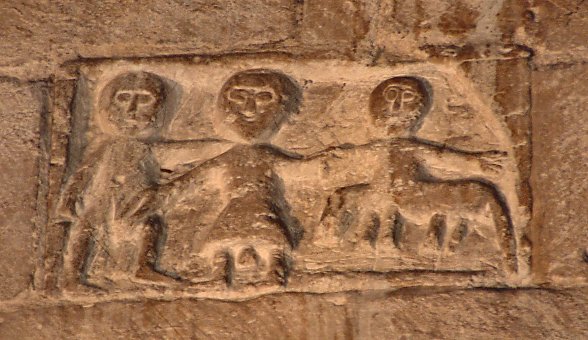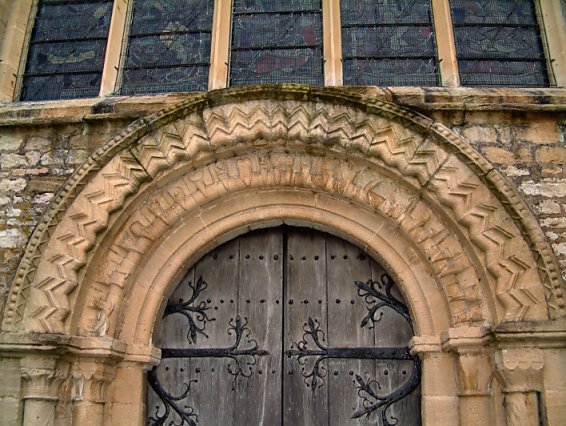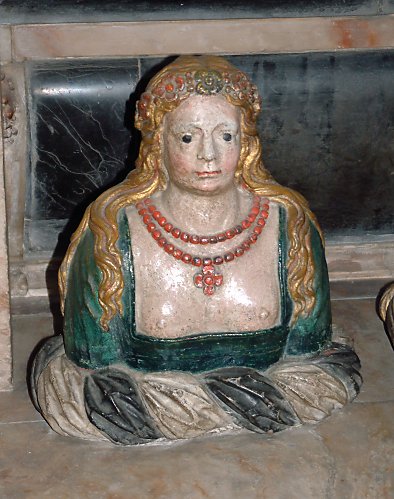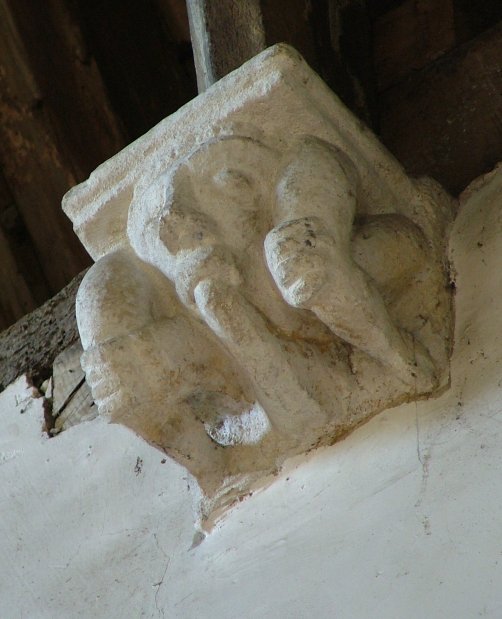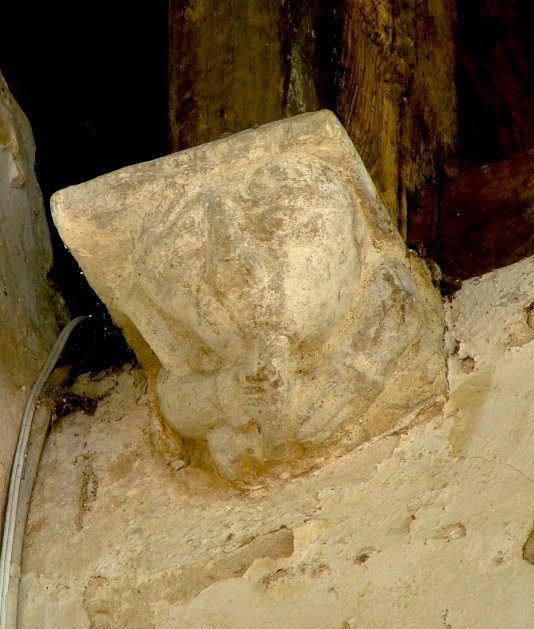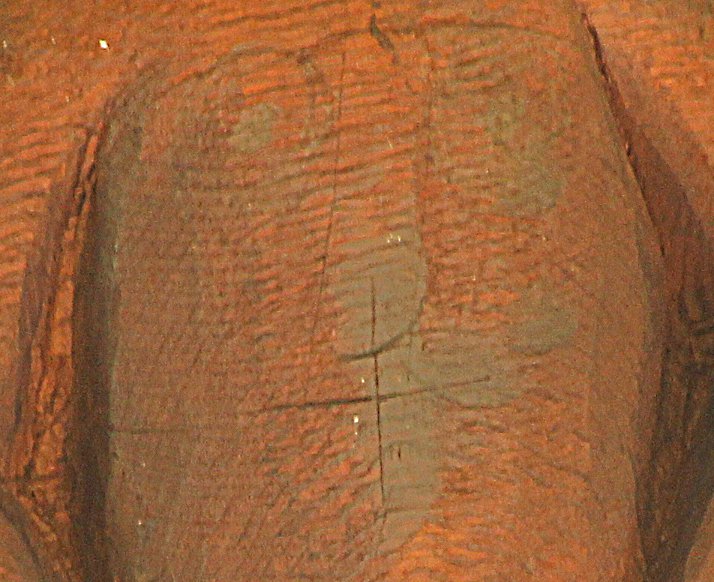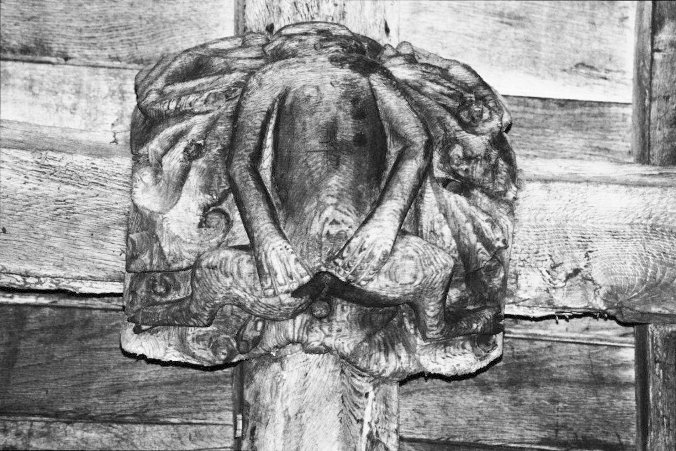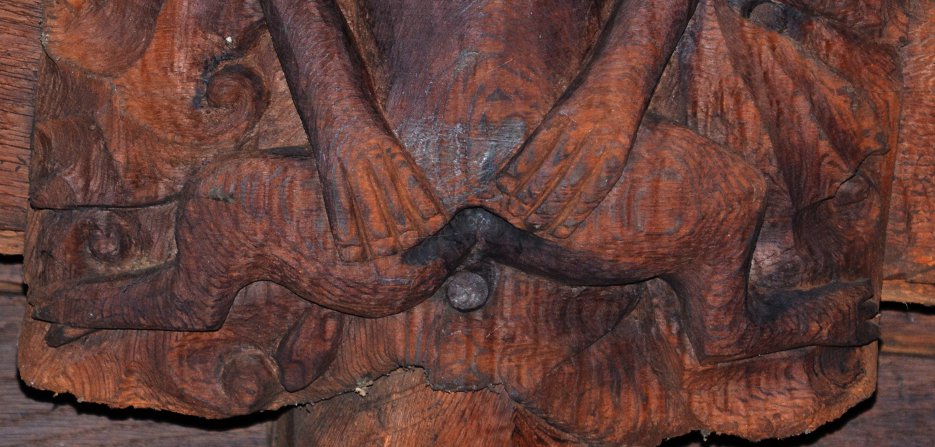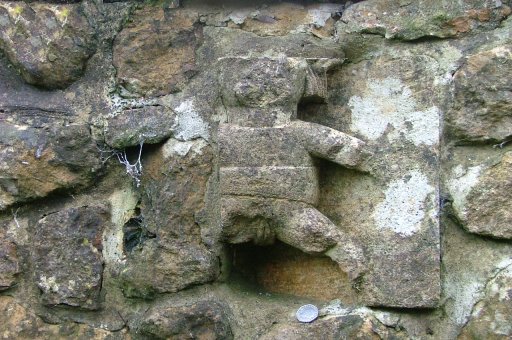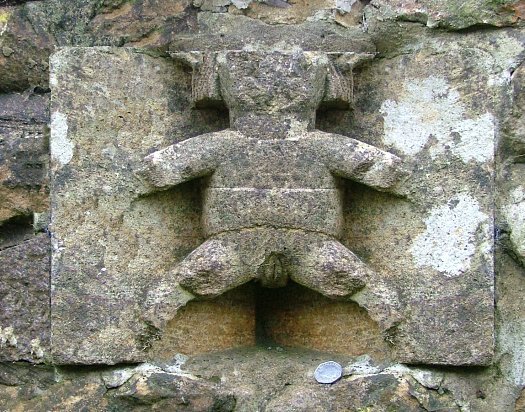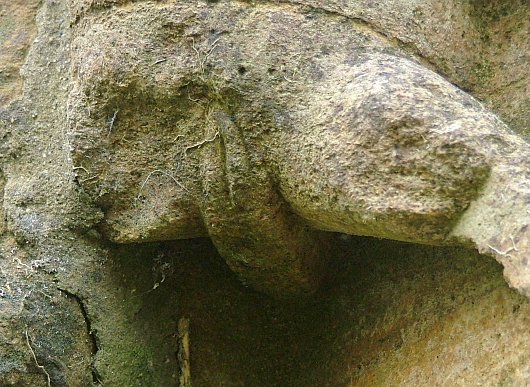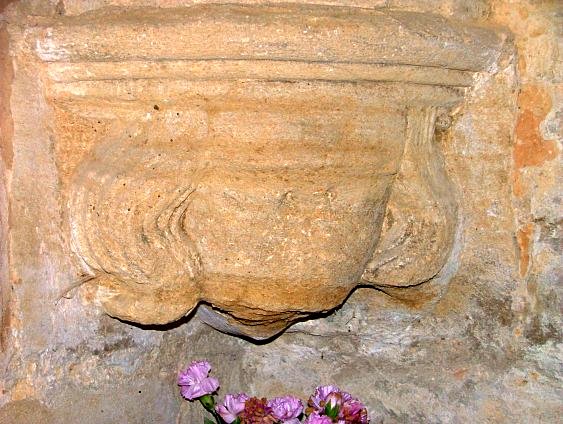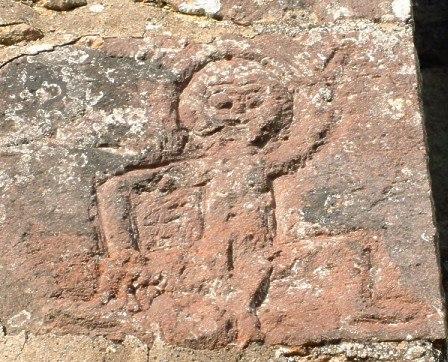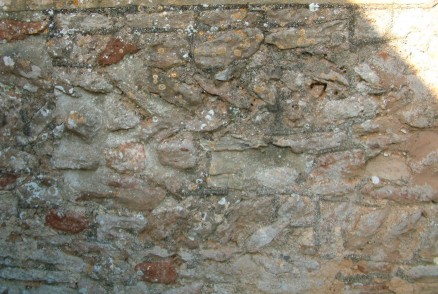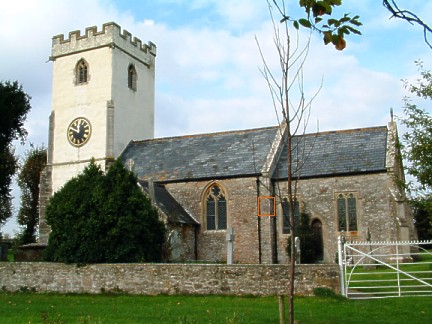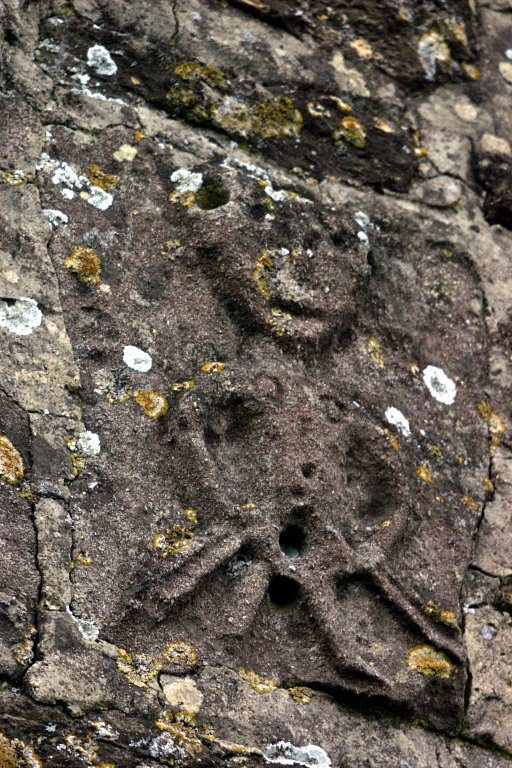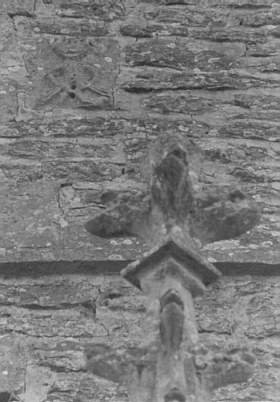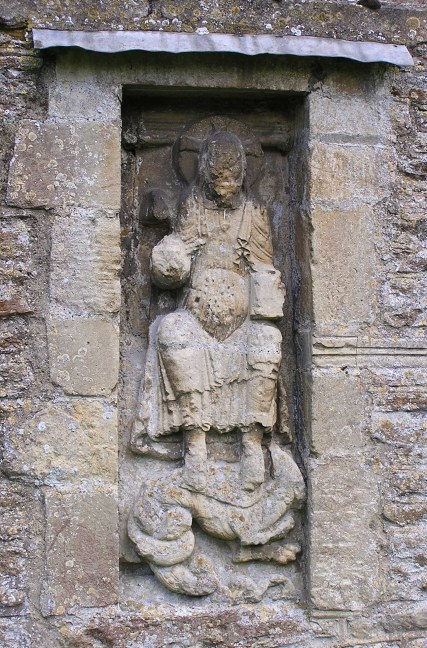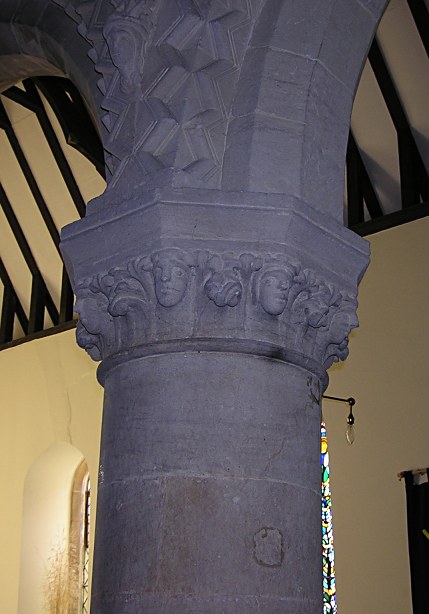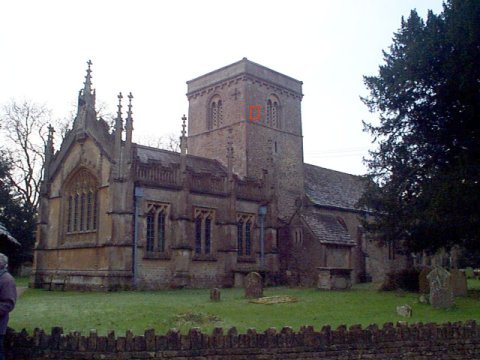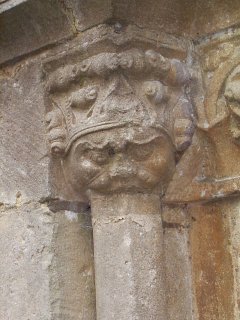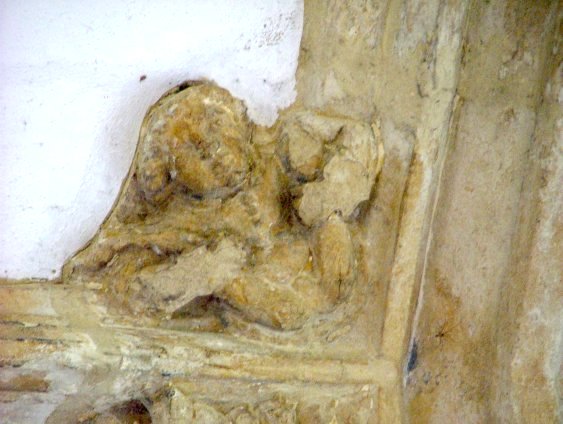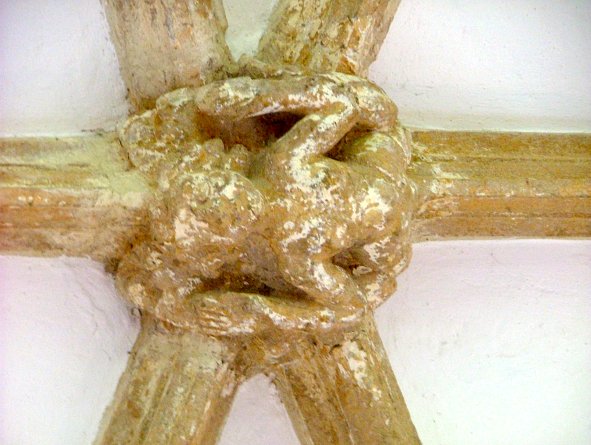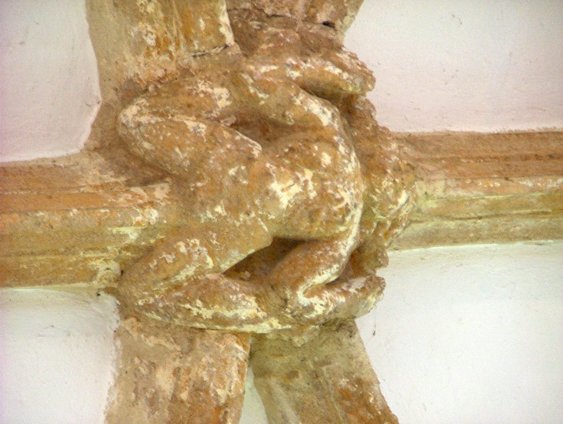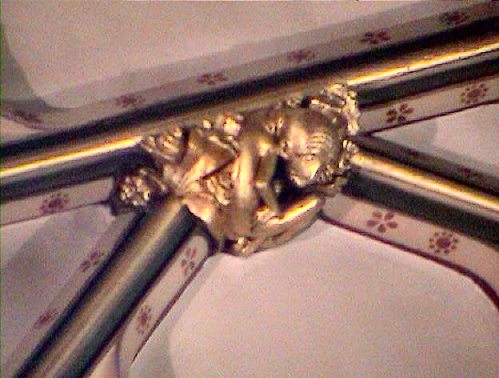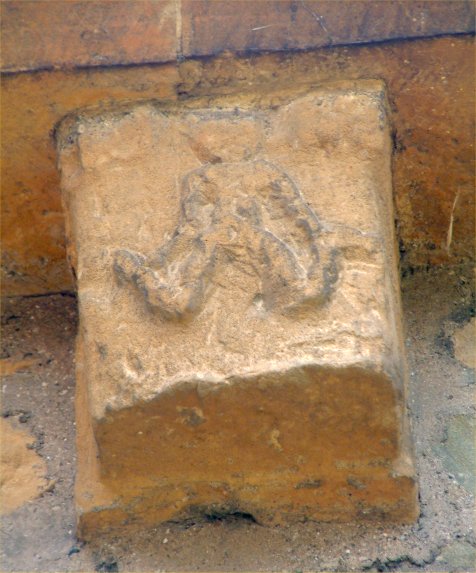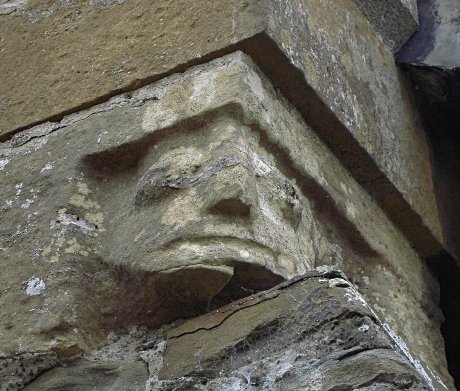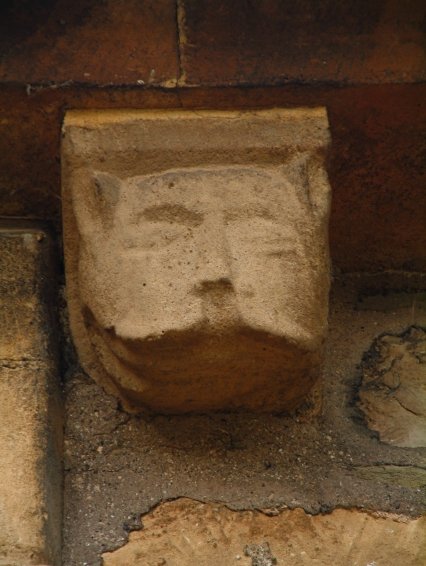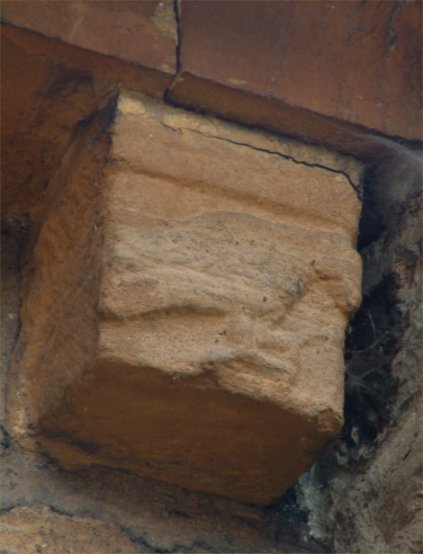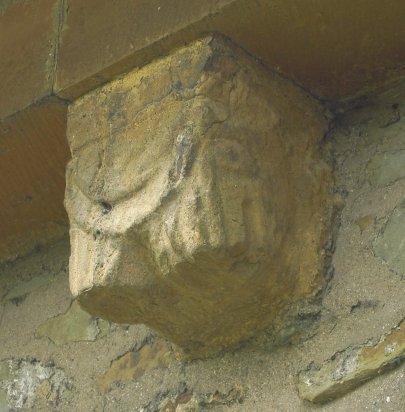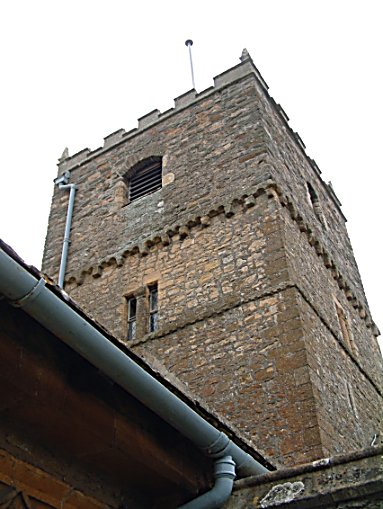
The Figure
This figure lies on a corner stone of the church of St Mary the Virgin, Painswick. Painswick is a picturesque Cotswold town which has earned itself the unofficial title of “Queen of the Cotswolds”. The church which was originally Norman was remodelled around 1480 in the perpendicular style. The churchyard has 99 yew trees in which enclose the churchyard paths making them into tunnels in some places. There is a legend surrounding the yews that if a 100th tree is planted then the tree and the person who planted it will die because the devil wishes to keep the number at 99. The church is also famous for it’s large imposing spire which can be seen for miles around and it’s “clypping” ceremony where once a year the children of the parish form a ring around the church and sing hymns. It’s thought to express the parishioners love for the church by embracing it. On the outside, the church is for the most part fairly plain but there are at least four pieces of carving including the male figure with a possible fifth enigmatic “face” high on the tower. However this may just be an simulacra. If anyone knows any more about this “face” I would be happy to hear from them.
The phallic male figure has stubby arms and legs with a bald head and a pointed beard. Between his legs there are pair of small weathered testicles and his long thin penis rises almost to his chest. The penis is also slightly off centre. The figure shows a similarity to a bearded figure on the chancel arch atLower Swell some 30 miles to the East.
All of the figures on the church show a fair degree of weathering. In addition to the male phallic figure there is also a man with a “barrel” with a hole in it, another who appears to be eating and a gargoyle type figure. All of these figures have holes in them unlike the phallic figure which would seem to indicate that were meant to act as waterspouts. No mention is made of any of carvings in the church literature. Thanks go to Hazel Brown for bringing this figure to my attention.
